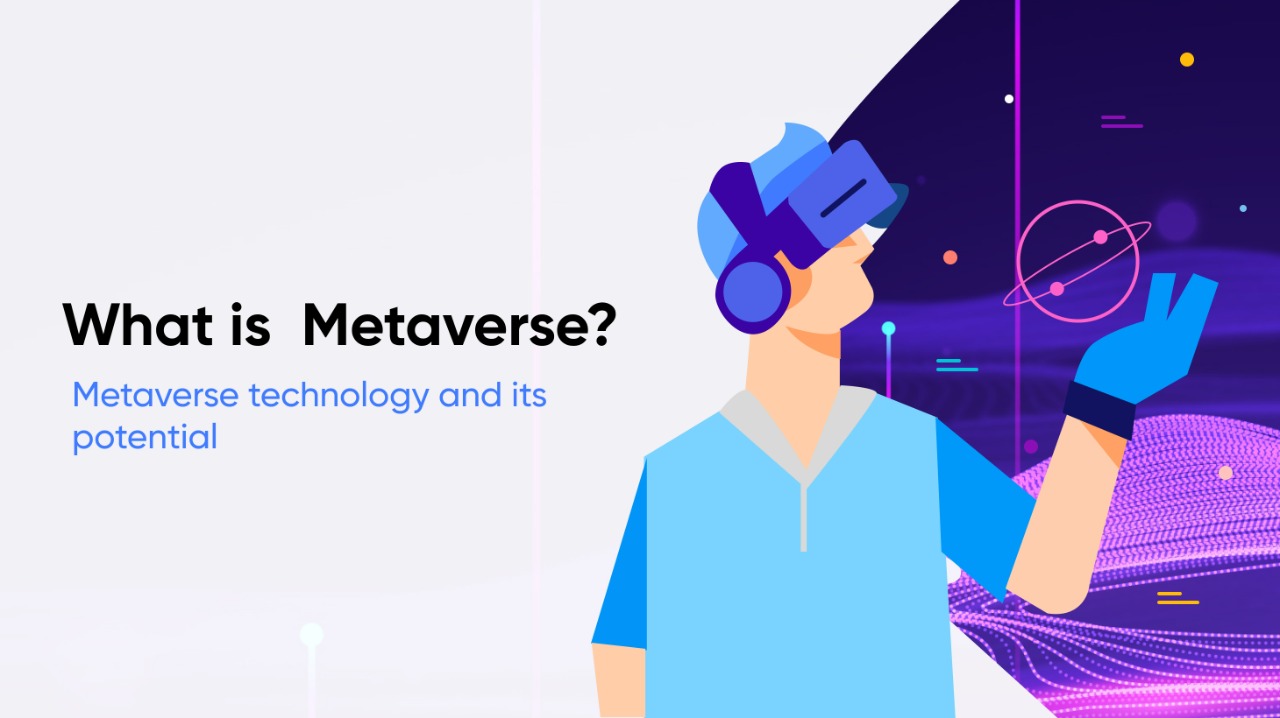The metaverse has swept the tech industry this past year, becoming one of the most discussed yet misunderstood ideas.
Everything from Facebook's "Meta" makeover to Microsoft's astounding $68.7 billion purchase of Blizzard has taken place in the pursuit of a possible $8 trillion market opportunity.
The majority of businesses, however, continue to ponder questions like "What in the world (or digital world) is the metaverse?", “what is Metaverse Technology Potential” and "What could all of this imply for my business?"
To get things started, we will define the metaverse and its mission, dissect its Blockchain Technology, and give some examples of how businesses are currently manifesting themselves in the metaverse.
What is a Metaverse?
Although this seems like a simple topic, there are many different views on what the metaverse is and is not. We're still in the "visioning" stage of the metaverse's potential development, which makes it difficult to define.
Any future version will have the components needed, but connecting them seamlessly is just now becoming practical. We're beginning to see the first actual business cases (and real investment) for allowing computers and data to interact with our natural cognitive talents, which is more than just technological curiosity.
As you read this, businesses and brands are working feverishly to develop the tools and technology that will eventually combine to form what will be referred to as the metaverse. The metaverse's enabling and delivering technologies may be the most significant advancements in human history.
The change will effectively combine the physical and digital worlds and how we view this new reality. Therefore, any description faces the challenging task of extolling the metaverse's boundless potential while also acknowledging the lofty presumptions and scientific advances required for it to take place.
We define the metaverse games and metaverse as an emerging internet generation that enables creators (brands, users, AI, or a hybrid of all) to deliver connected, intelligent, and immersive experiences centered around activities or a utility based on our understanding of the potential future state and where we are today.
Distances will be compressed by the metaverse, which will also change how we communicate, travel, learn, see the doctor, hang out with friends, and conduct business.
This definition's inclusion of the idea that the metaverse is still in its early phases and will continue to grow over time is a crucial component. To ensure they can benefit as the metaverse develops, there is significant potential for enterprises to start the process of testing and learning inside its components.
The boundaries between the physical, digital, and biological sciences will continue to blur as we go towards the final stage of the industrial revolution, creating a brand-new reality with brand-new opportunities. Businesses that have learned from past mistakes will be in a better position to build their brands in this new environment.
We will start to dismantle the metaverse in the parts that follow in order to make it more realistic for enterprise applications. We'll do this by examining its traits, components, and present use cases.
The Value Chain Explains How It Works
While defining the "what" of the metaverse can be difficult, determining its "how" is a little simpler. The value chain is composed of three fundamental layers at its greatest levels: creation, connection, and convergence.
Each element of the value chain will be made possible by a variety of different technologies and services that are contained inside each layer.
Just a few essential technological components and service providers have been highlighted to show how they individually enable the different parts.
Major competitors are vying to stake their claims, but it is yet unclear which vendors will ultimately "win" in becoming the essential providers for particular sections of the value chain.
1. Create
The metaverse's ability to create is made possible by
the dematerialization of goods, services, and real estate. Experiences or technology that were formerly limited are now commonplace and expected.
In addition to experiences and technologies becoming more widely available, the number of creators who design and/or build them is also increasing exponentially.
Examples include immersive games like Fortnight and Beat Saber, emerging platforms like The Sandbox and Axie Infinity, Coinbase, and MetaMask on our phones, and our home gyms powered by Peloton.
The production of engaging, realistic content will be a crucial factor in what propels end-user acceptance of the metaverse as the process shifts from a bottoms-up, code-centric one to a top-down, creatively-centered one.
The creator economy focused on creating and making money from experiences within the metaverse has already started to emerge as a result of this greenfield possibility to create and own content.
A genuine transition from centralized communities of content consumers to community creators and amplifiers building a decentralized flywheel powered by tools, templates, social networks, markets, and monetization capabilities.
Different design tools are required to produce, rig, animate, and simulate content in order to support this development. To support content development and deliver high-fidelity experiences to users, GPUs are required.
Real-time 3D development of hyper-realistic content requires game engines. Most significantly, these technologies must develop together since they are critically dependent on one another.
2. Connect
In order to properly deliver content, the right infrastructure must be created in order to connect creators and users. In order to boost connection speeds for data-rich experiences, the metaverse will significantly rely on already-existing infrastructure technology.
For instance, the popularity of 5G and other cutting-edge networks combined with continuous downsizing and greater chipset processing power would make it possible for connections to be made quickly and with little latency.
Data will be more easily available if it can be stored and shared on well-known cloud platforms at a reasonable cost. Blockchain technology may be used to securely store data and content in a decentralized manner and is enabling new ways of componentizing and assembling content, utility, and currencies.
Decentralized markets and applications based on blockchain technology are expected to continuously take on new forms and formats.
Metaverse experiences and technologies will advance in accessibility and comprehension just like earlier infrastructure technologies as they continue to develop.
3. Converge
As consumers and businesses may interact, the convergence layer is where the value of the metaverse is achieved. Technology advancements in hardware and software will expand our human potential and make it simpler for end users to spend a lot of time in the metaverse.
Our view of the actual and virtual worlds will become even more merged thanks to the development of next-generation mobile devices, VR/AR headsets, smart glasses or contact lenses, haptic suits, and neural technologies. Cryptocurrencies will be used to exchange value between users in the metaverse, built on top of blockchain technology.
More commonplace experiences will be accessible across the metaverse as these experiential technologies evolve.
Key Qualities That Will Drive Its Success
Even though we may not be able to predict the exact form the metaverse will take in the future, we do agree on some of the essential characteristics that will ensure its success.
Despite the fact that these qualities currently range in terms of how well they are being used now, they will continue to gain significance as the metaverse develops.
The main characteristics, their current manifestations, and potential implications for the metaverse's future are listed below.
1. Interaction
The capacity for people, organizations, and digital content to interact with one another inside the metaverse defines interaction.
Meta's Horizon Worlds serves as an example of interaction in the metaverse as it now stands. Users can construct, communicate, and live in any space they can think of using this application.
Users can build environments such as battle royale arenas, collaborative areas, and learning forums using the creation tools provided by Horizon Worlds.
2. Economy
Similar to the actual world, the metaverse will have an economy where people and organizations can create, own, invest in, sell, and profit from acts that generate value.
The decentralized features of the metaverse, which promise greater security, ownership of assets and data, and the capacity to produce, disseminate, and profit from their earned, paid, or owned content, are viewed by the majority of early consumer adopters as the value driver.
3. Interoperability
The capacity to use content (data, information, and digital assets) across various metaverse systems is what defines interoperability.
Examples of today's ownable, interoperable digital assets are cryptocurrencies and NFTs. They can be added to, placed, and used for transactions on a number of digital sites.
4. Identity
Speaking of identity, it is distinguished in the metaverse by the freedom granted to each person to participate in the same digital experience while preserving their own individuality and autonomy.
5. Digital Immersion
The term "digital immersion" refers to the variety of experiences that can take place in either the physical or digital worlds, as well as how immersed you are in each.
In the early stages of the metaverse, it's critical to develop the necessary skill sets, foster curiosity, and accept failure. Star formation requires time, energy, mass (amounts of knowledge), and a small bit of luck, much like in the real world.

















Post Comments